Conservation of the cultural and natural environment of the arctic. Рубрика в журнале - Arctic and North
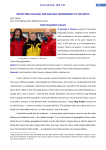
Статья научная
The article is about the meeting with the famous traveler F.F. Konyukhov, whose ancestors were Russian Pomors, in the White Sea coast, in the place called Letnyaya Zolotitsa. Photos of the meeting are published.
Бесплатно
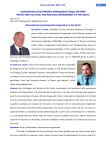
International environmental cooperation in the Arctic
Статья научная
Key challenges and threats to the Arctic environment are associated with progressive pollution and degradation of environmental components in the face of increasing anthropogenic load, the accumulation of waste, climate change and others. International cooperation in the field of envi-ronmental safety, unprecedented speed and energy cooperation in the Arctic can serve as a positive example and a lesson for humanity. An important role in environmental cooperation play an international environmental organization, the Arctic Council, states. On the con-Jania cooperation affects contradictory trends determining the current state of international co-relations. It is concluded that joint efforts need to create a system of global interaction, which, taking into account the interests of all parties, would be enabled to make rational use of natural resources in the Arctic.
Бесплатно
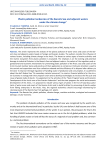
Plastic pollution tendencies of the Barents Sea and adjacent waters under the climate change
Статья научная
The article represents the analysis of the plastic pollution of water areas and coasts of the Barents Sea and adjacent waters based on foreign and Russian studies. The authors consider the influence of various factors, including climate change in the Arctic. The threat to various types of marine activities and the marine ecosystem from plastic pollution is evaluated. The emphasis is on the existing and potential damage to industrial fisheries in the Barents Sea and adjacent waters. An analysis of the regulatory and organizational and economic mechanisms for preventing plastic pollution of the Arctic seas and coasts of the Arctic Council member states and practices of their application is carried out. Particular attention is paid to the control and supervision over litter collection onboard and the efficiency of its disposal after delivery to the land. To improve the legal regulation of handling waste of production and consumption, it is justified to adopt the draft federal law “On secondary material resources”; to create a financial platform for the circular economy in analogy with the European Union and to develop technologies to increase the life cycle and reuse of goods made of plastic. To supplement to the activities of the “State Program Social and Economic Development of the Arctic zone of the Russian Federation” and the state programs for social and economic development of the Arctic, it is proposed to include various types of plastic in the list of hazardous pollutants of water areas and coasts of the Russian Arctic and to build facilities for processing of plastic wastes from fishing enterprises in the Arctic. Also, the regional authorities should encourage volunteering for cleaning coasts of the Barents Sea from garbage, incl. plastic.
Бесплатно
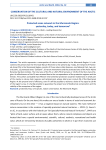
Protected areas network in the Murmansk Region: yesterday, today, and tomorrow
Статья научная
The article represents a retrospective of nature conservation in the Murmansk Region. It is devoted to the period since the first State Nature Reserves to the present day. Today, the network of Protected Areas (PA) in the Murmansk Region consists of three nature state Reserves, one National Park, two natural parks, 12 protected areas “Zakaznik”, 55 nature monuments and the protected area of the Polar-Alpine Botanical Garden-Institute. The total area of the PA is 1,947,799.4 hectares or 13.4% of the Mur-mansk Region. An effectiveness of the PA was assessed due to the correspondence of the protection regimes and the threats. The authors concluded that effective environmental protection could be realized only in small part of PA, mainly in nature state reserves and national park, whose total area is only 4.2% of the Murmansk Region. At the present level of efficiency, even if it will be possible to achieve a share of Pas equal to 16.4% of the region’s area, it is hardly possible to guarantee the proper level of biodiversity conservation and the stability of the ecosystem of the region.
Бесплатно
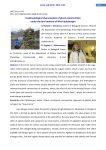
Еcophysiological characteristic of plants communities under the bird rookery of West Spitsbergen
Статья научная
In the Arctic nature carries out its unique experiments, an example of which is the vegetation of bird colonies, where life is determined by the organic matter, which is taken out from the sea birds and is used only under the bird colonies. The absorption of nitrogen in the Arctic is limited by abiotic factors: low temperature and humidity, the slow erosion of rocks, low transpiration and the presence of permafrost. The data on the content of total nitrogen and chlorophyll in plants and lichens in communities located beneath bird colonies in the West Svalbard. The study showed that plant communities of rookeries, where the effect of one of the limiting factors of the Arctic (poor soil horizon) is reduced, give some idea of the "Green Arctic", where the current climate change is guiding it.
Бесплатно

